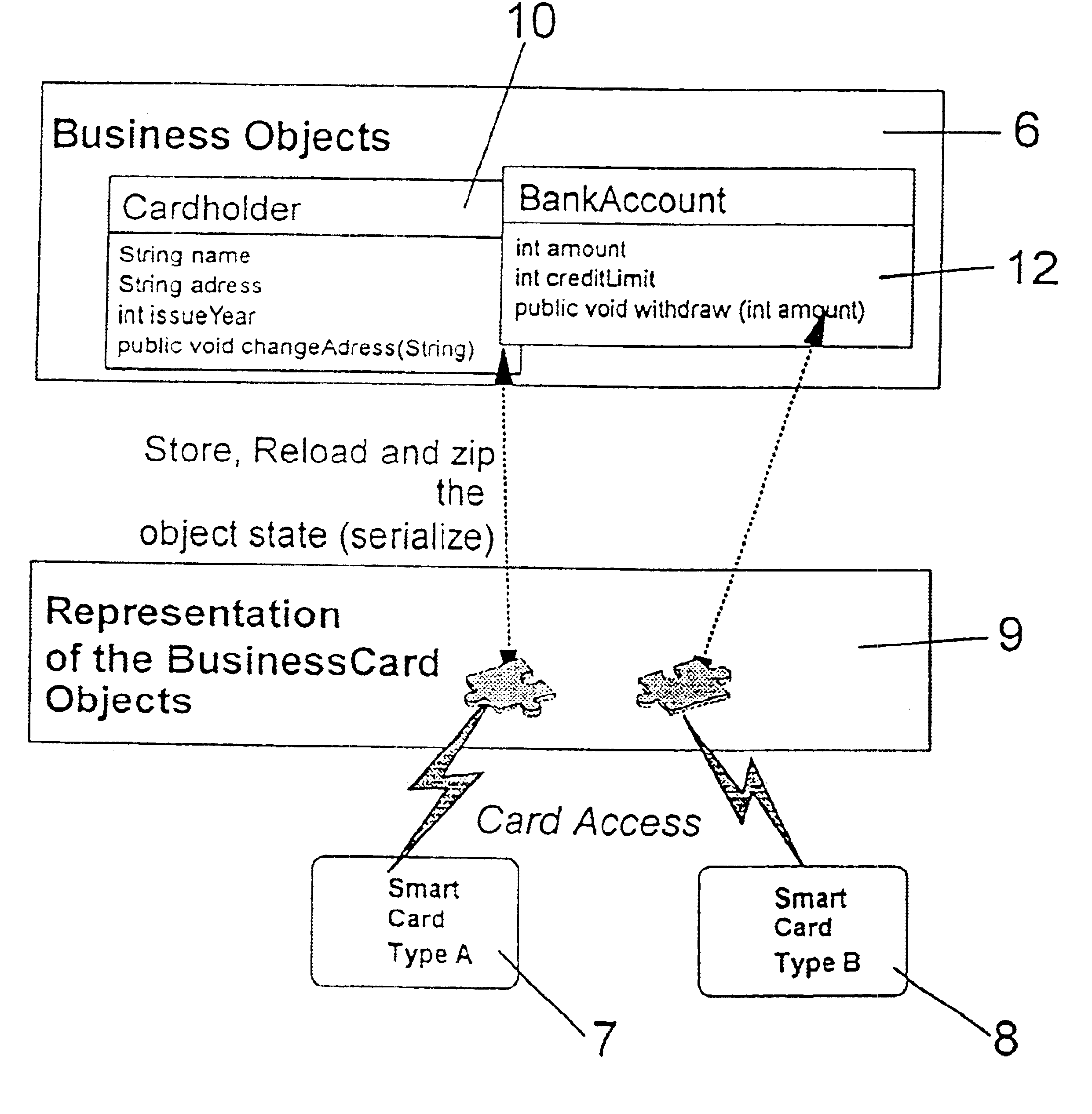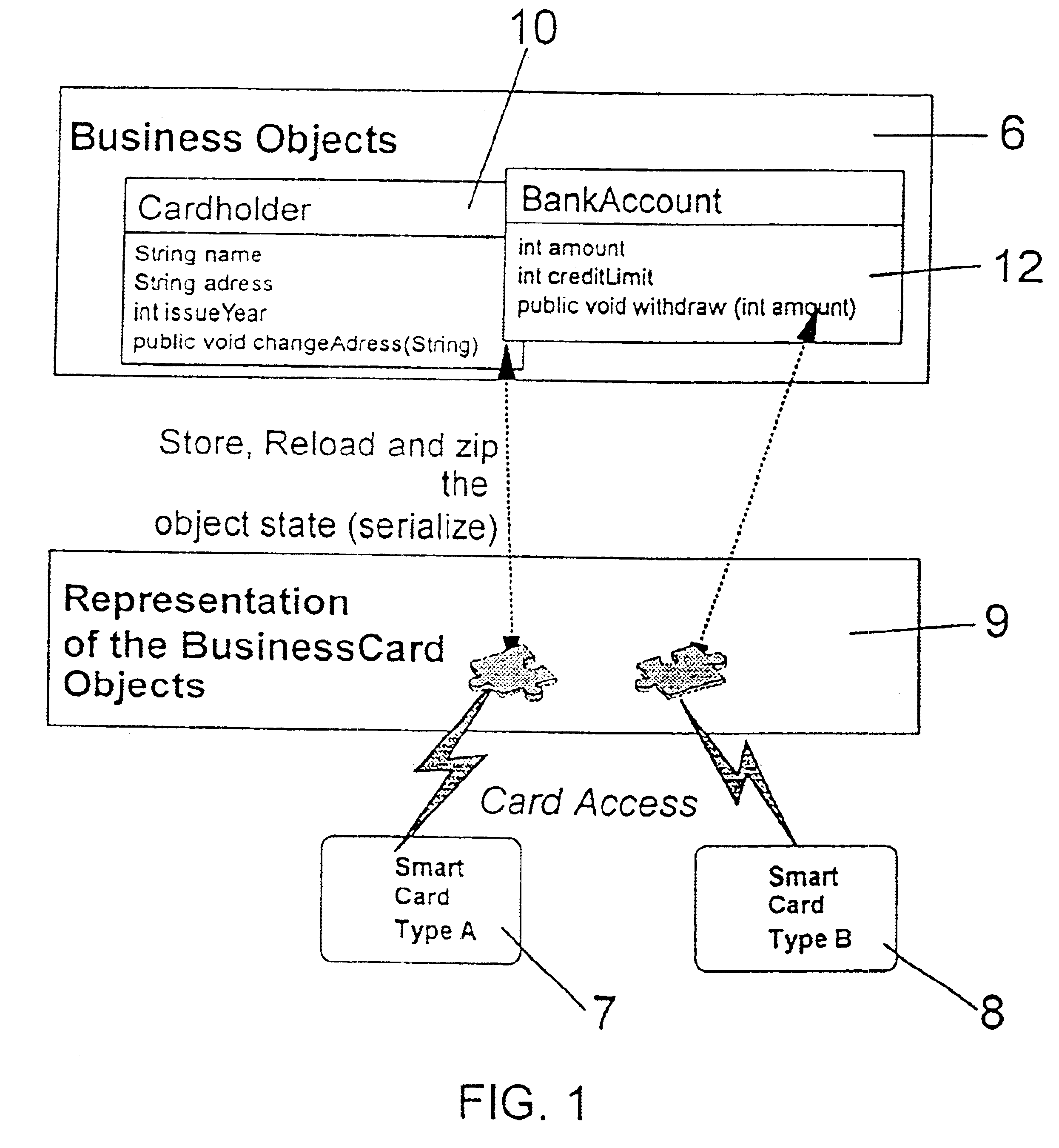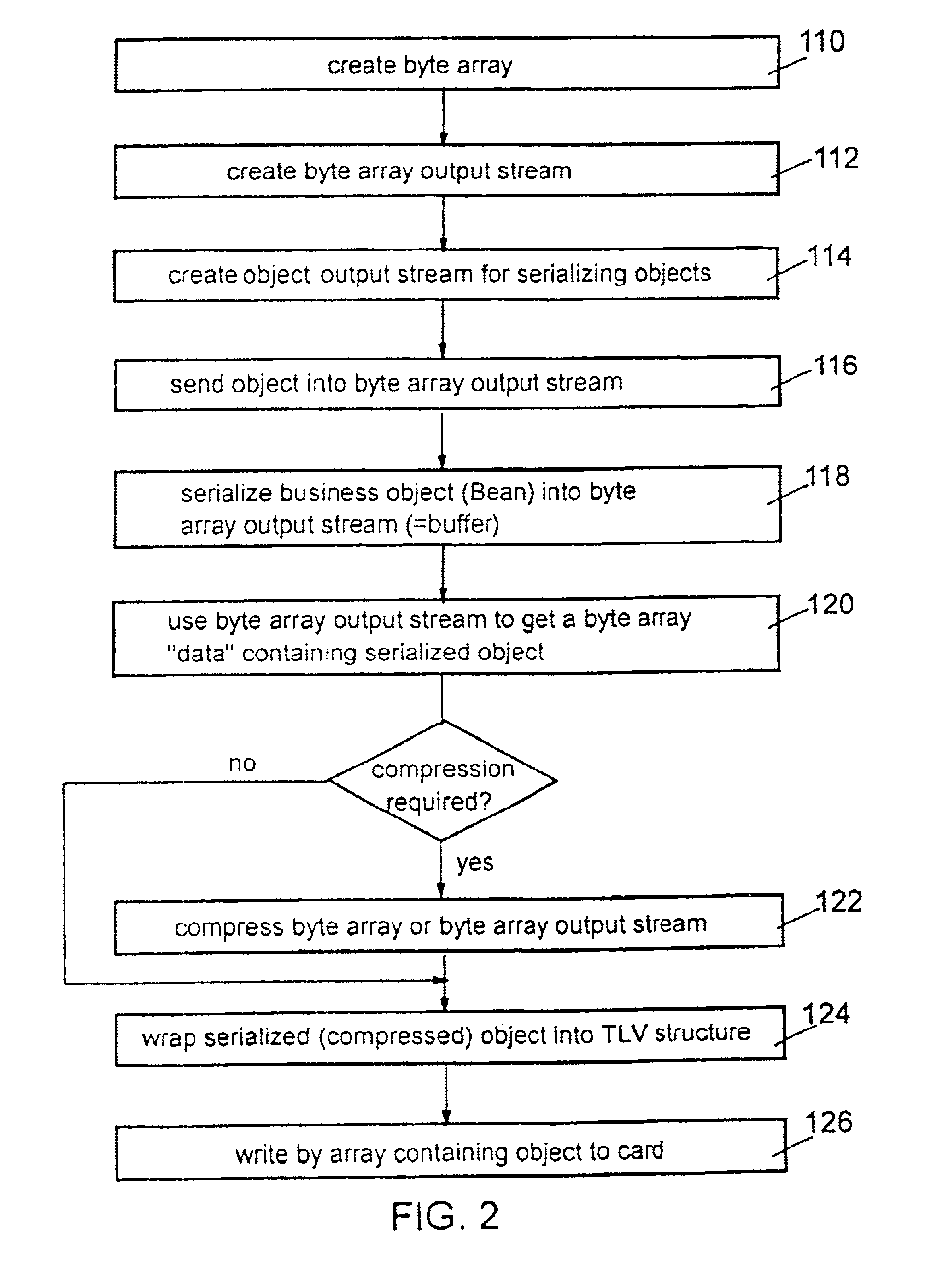Method and system for storing java objects in devices having a reduced support of high-level programming concepts
a technology of object storage and java, which is applied in the direction of program control, interprogram communication, multi-programming arrangement, etc., can solve the problems of reducing the utilization rate of java objects, affecting the application development of smartcards, and preventing the propagation of such devices, etc., so as to increase the utilization rate of limited memory space, facilitate the processing of such data, and facilitate the use of memory space. large
- Summary
- Abstract
- Description
- Claims
- Application Information
AI Technical Summary
Benefits of technology
Problems solved by technology
Method used
Image
Examples
Embodiment Construction
With general reference to the Figures and with special reference now to FIG. 1 the basic principle of the present invention is illustrated and summarized next below.
Said principle is illustrated by way of a banking application 6 which is deemed to work with a plurality of different SmartCards 7, 8 over a programming interface 9 which plays a central role in implementing the inventional method. Said application comprises at least two exemplary application objects, one object 10 holding data describing the cardholder, and a further object 12 describing the cardholder's bank account. This example is held simple intentionally in order to focus on the kernel of the present invention.
The serialization of objects before storing them and the respective deserialization after reading them is taking place in said interface 9 and can be comprised by a JavaBeanItemClass which is provided to the application engineer.
Said BeanItemClass provides functionality to store and to recover, i.e. to read a...
PUM
 Login to View More
Login to View More Abstract
Description
Claims
Application Information
 Login to View More
Login to View More - R&D
- Intellectual Property
- Life Sciences
- Materials
- Tech Scout
- Unparalleled Data Quality
- Higher Quality Content
- 60% Fewer Hallucinations
Browse by: Latest US Patents, China's latest patents, Technical Efficacy Thesaurus, Application Domain, Technology Topic, Popular Technical Reports.
© 2025 PatSnap. All rights reserved.Legal|Privacy policy|Modern Slavery Act Transparency Statement|Sitemap|About US| Contact US: help@patsnap.com



